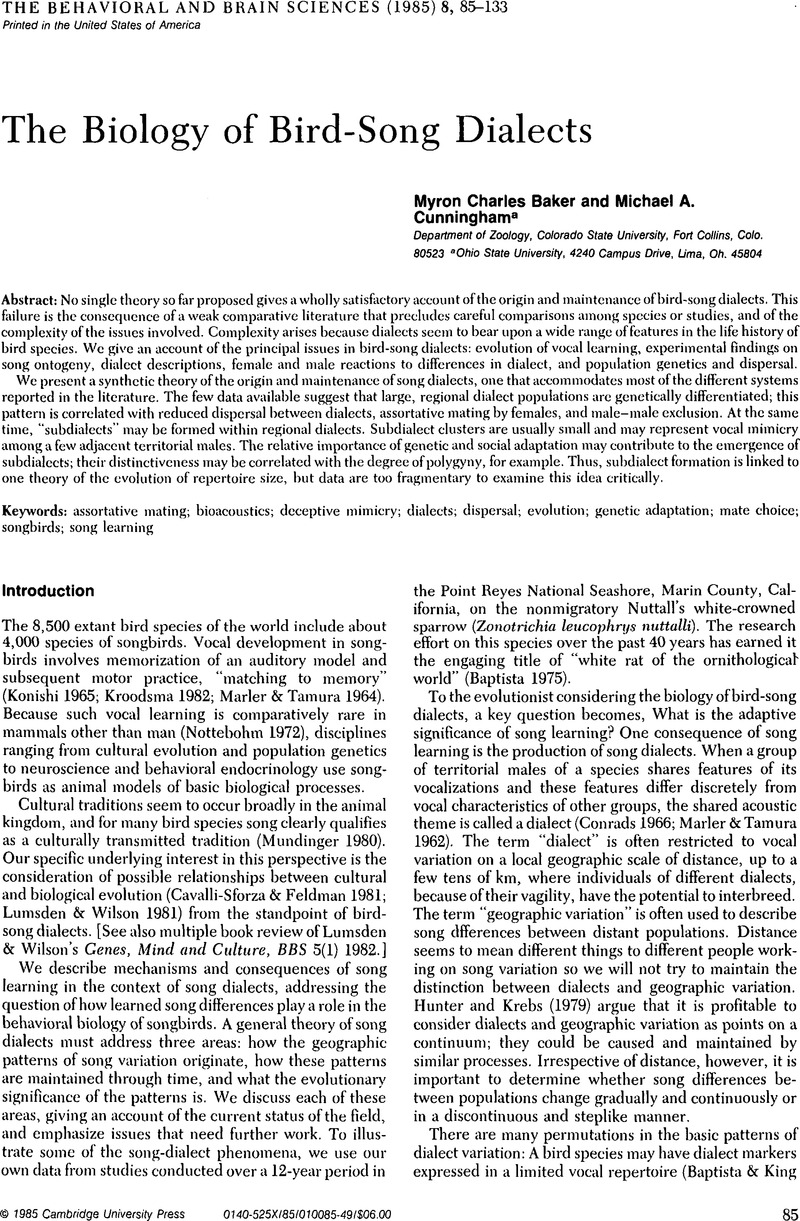Crossref Citations
This article has been cited by the following publications. This list is generated based on data provided by Crossref.
Pepperberg, Irene M.
1986.
Sensitive periods, social interaction, and song acquisition: The dialectics of dialects?.
Behavioral and Brain Sciences,
Vol. 9,
Issue. 4,
p.
756.
Baker, Myron Charles
and
Cunningham, Michael A.
1986.
Song learning and dialect: More experiments needed.
Behavioral and Brain Sciences,
Vol. 9,
Issue. 4,
p.
757.
Rothstein, Stephen I.
and
Fleischer, Robert C.
1987.
Brown-Headed Cowbirds Learn Flight Whistles after the Juvenile Period.
The Auk,
Vol. 104,
Issue. 3,
p.
512.
MCGREGOR, PETER K.
WALFORD, VERENA R.
and
HARPER, DAVID G.C.
1988.
SONG INHERITANCE AND MATING IN A SONGBIRD WITH LOCAL DIALECTS.
Bioacoustics,
Vol. 1,
Issue. 2-3,
p.
107.
Williams, J.M.
and
Slater, P.J.B.
1990.
Modelling bird song dialects: the influence of repertoire size and numbers of neighbours.
Journal of Theoretical Biology,
Vol. 145,
Issue. 4,
p.
487.
Helweg, David A.
Frankel, Adam S.
Mobley, Joseph R.
and
Herman, Louis M.
1992.
Marine Mammal Sensory Systems.
p.
459.
Slabbekoorn, Hans
and
Smith, Thomas B.
2002.
Bird song, ecology and speciation.
Philosophical Transactions of the Royal Society of London. Series B: Biological Sciences,
Vol. 357,
Issue. 1420,
p.
493.
2004.
Nature's Music.
p.
388.
Podos, Jeffrey
and
Warren, Paige S.
2007.
Vol. 37,
Issue. ,
p.
403.



